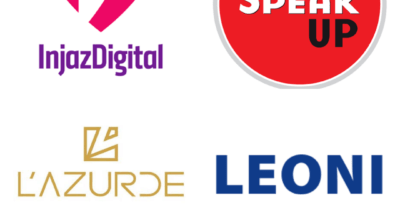The first thing that comes to our mind when we hear the word “applying”, whether for an internship, a scholarship, a volunteering program or even for university admissions, is the famous Curriculum Vitae (CV). Yet, among the list of requested papers from recruiters, HR departments, or admissions managers is a Motivation Letter.
Motivation Letters are statements to show your recipient how passionate and interested you are to get the internship or the scholarship or whatever it is you’re applying for. It is a written pitch on why you should be chosen, instead of the other bazillion applicants. In other words, it is an argumentative letter on “Why You?”
Writing a motivation letter can be challenging, yet with the right steps, you can write an outstanding one. Hence, 925Egypt created an A-to-Z guide on how you can write a motivation letter that would actually be read until the end.
Plan Your Work And Work To Plan

Motivation Letter Writing
Before crafting your letter, you need to plan what topics or past experiences you would include. Start by writing an outline or a list of bullet-points of things you would feature in your “Statement of Purpose”. It is important to “edit” your experiences. Meaning, only choose the relevant details, as your recruiter is not interested in your entire life story.
Of course, it is still indispensable to make your Motivation Letter stand out by accentuating your experiences. And with a few personal details, you can actually make an interesting letter. In other words, try to find a balance between highlighting your qualifications, and making it a little personal, so the recipient would relate.
Moreover, it is extremely necessary to do some research. Try to find background information, vision or values of the university or the company you are addressing. It would be easier to tailor your written statement if you know what they are looking for in the first place.
First Impressions Last
Now, it is time for the introduction, which I personally think is the most important part of the Motivation Letter, since it sets the ambiance of your tone and creates the first impression. If the recipient did not find the introduction interesting enough, it is very probable that he would not continue reading it.
Here is what to include:
- Address the recipient, by using standard letter openings, like “Dear Sir or Madam”, or “To whom it may concern”, in case you do not know the person you are addressing. If that is not the case, then use “Dear Mr. /Mrs. (the name of the recipient).”
- State your purpose, as it is important to clarify the objective of your 2-page letter. Specify why you are writing this Motivation Letter and which position or program you are applying for.
- Introduce yourself, by stating your age, and current position.
- Explain how you knew about this opportunity. Is it through a friend? Or is it through social media or a research you conducted?
- At the end of the introduction, add a brief summary on why you are applying, or what intrigued you to send your application.
Keep Going, You Are Getting There
For the body of your letter, you need to “flex”, which means that you should show your recipient why you are qualified for the position or the program. Bring up your professional experiences, past trainings or workshops. But, words are not enough. Quantify your experiences into actions by tackling the challenges, and the difficult tasks you faced and how you dealt with them.
You need to do all of that while showing your passion and interest to work, train, or study in the field. Write about your resume with a hint of personal storytelling that highlights your spark. Moreover, in this part, you can add the information you found about the organization you are writing to.
At the end of your one or two body paragraphs, end with an affirmation statement that shows your confidence in taking the position or studying in that program.
The Best for the Last
Write a conclusion to your Motivation Letter that summarizes your professional experience and your goals. Leave your last paragraph on a high-note, by writing a positive statement that would leave a good final impression. Lastly, thank your recipient for considering your application and for reading it. Then, sign off your letter, and add your personal information, including your email or address.
Keep Calm and Proofread
Do not hit send just yet. After you have written your Motivation Letter, take some time off and do something fun, and then when you are refreshed, get back to your document. Spending time away from the document would help you spot grammatical mistakes and typos faster.
It is extremely important to edit your written statement and perfect it. No one would want to recruit or accept a person who writes “Your” instead of “You are”. Proofread as many times as you can, add your final touches, and you are good to go. Now, you can hit the “Send” button.
A Motivation Letter is a way to earn an interview, and get your application approved. Hence, it is necessary to make it professional, organized, and most importantly to subtly ‘sell yourself’.



























